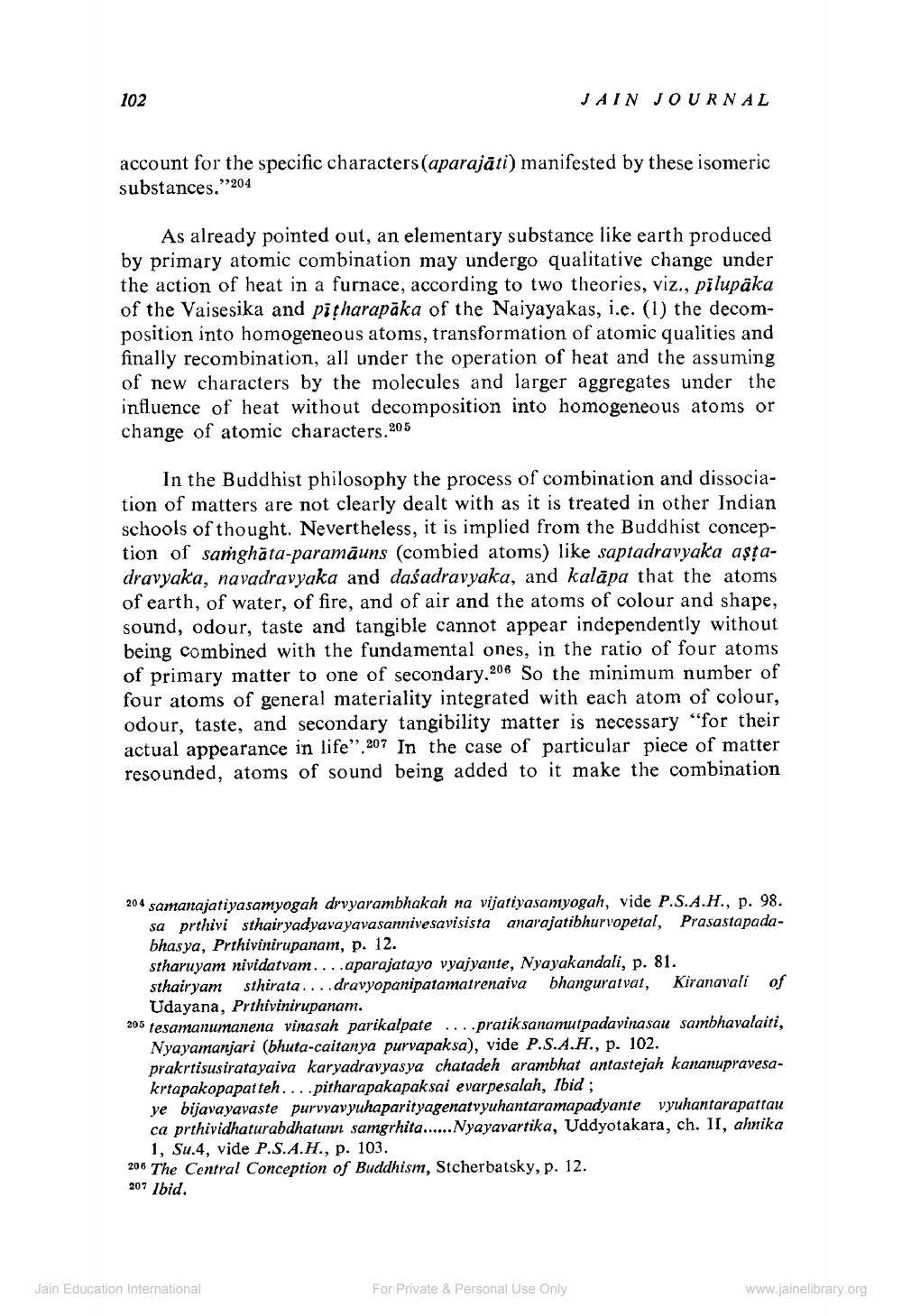________________
102
account for the specific characters (aparajāti) manifested by these isomeric substances."204
JAIN JOURNAL
As already pointed out, an elementary substance like earth produced by primary atomic combination may undergo qualitative change under the action of heat in a furnace, according to two theories, viz., pilupaka of the Vaisesika and pīṭharapāka of the Naiyayakas, i.e. (1) the decomposition into homogeneous atoms, transformation of atomic qualities and finally recombination, all under the operation of heat and the assuming of new characters by the molecules and larger aggregates under the influence of heat without decomposition into homogeneous atoms or change of atomic characters.205
In the Buddhist philosophy the process of combination and dissociation of matters are not clearly dealt with as it is treated in other Indian schools of thought. Nevertheless, it is implied from the Buddhist conception of samghata-paramāuns (combied atoms) like saptadravyaka aşțadravyaka, navadravyaka and daśadravyaka, and kalapa that the atoms of earth, of water, of fire, and of air and the atoms of colour and shape, sound, odour, taste and tangible cannot appear independently without being combined with the fundamental ones, in the ratio of four atoms of primary matter to one of secondary.206 So the minimum number of four atoms of general materiality integrated with each atom of colour, odour, taste, and secondary tangibility matter is necessary "for their actual appearance in life" 207 In the case of particular piece of matter resounded, atoms of sound being added to it make the combination
204 samanajatiyasamyogah drvyarambhakah na vijatiyasamyogah, vide P.S.A.H., p. 98. sa prthivi sthairyadyavayavasannivesavisista anarajatibhurvopetal, Prasastapadabhasya, Prthivinirupanam, p. 12.
stharuyam nividatvam....aparajatayo vyajyante, Nyayakandali, p. 81.
sthairyam
sthirata....dravyopanipatamatrenaiva
Udayana, Prthivinirupanam.
205 tesamanumanena vinasah parikalpate....pratik sanamutpadavinasau sambhavalaiti, Nyayamanjari (bhuta-caitanya purvapaksa), vide P.S.A.H., p. 102. prakrtisusiratayaiva karyadravyasya chatadeh arambhat antastejah kananupravesakrtapakopapatteh....pitharapakapaksai evarpesalah, Ibid;
bhanguratvat, Kiranavali of
ye bijavayavaste purvvavyuhaparityagenatvyuhantaramapadyante vyuhantarapattau ca prthividhaturabdhatunn samgrhita......Nyayavartika, Uddyotakara, ch. II, ahnika 1, Su.4, vide P.S.A.H., p. 103.
Jain Education International
206 The Central Conception of Buddhism, Stcherbatsky, p. 12. 207 Ibid.
For Private & Personal Use Only
www.jainelibrary.org




